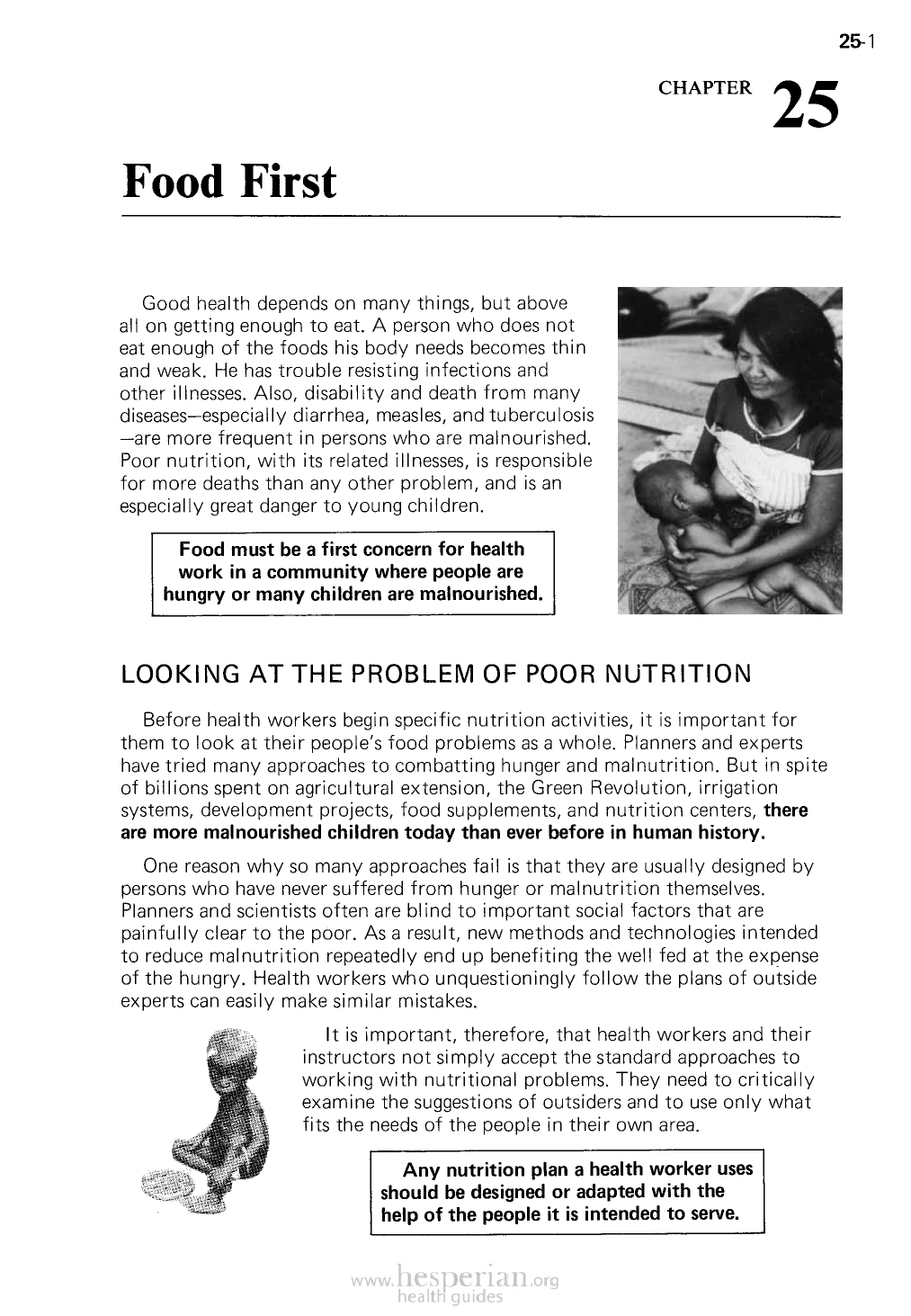
Food First
25CHAPTER
25-1
Good health depends on many things, but above
all on getting enough to eat. A person who does not
eat enough of the foods his body needs becomes
thin and weak. He has trouble resisting infections
and other illnesses. Also, disability and death from
many diseases—especially diarrhea, measles, and
tuberculosis —are more frequent in persons who are
malnourished. Poor nutrition, with its related illnesses,
is responsible for more deaths than any other problem,
and is an especially great danger to young children.
Food must be a first concern for health
work in a community where people are
hungry or many children are malnourished.
LOOKING AT THE PROBLEM OF POOR
NUTRITION
Before health workers begin specific nutrition activities, it is
important for them to look at their people’s food problems as
a whole. Planners and experts have tried many approaches to combatting hunger
and malnutrition. But in spite of billions spent on agricultural extension, the Green
Revolution, irrigation systems, development projects, food supplements, and nutrition
centers, there are more malnourished children today than ever before in
human history.
One reason why so many approaches fail is that they are usually designed by
persons who have never suffered from hunger or malnutrition themselves. Planners
and scientists often are blind to important social factors that are painfully clear to the
poor. As a result, new methods and technologies intended to reduce malnutrition
repeatedly end up benefiting the well fed at the expense of the hungry. Health
workers who unquestioningly follow the plans of outside experts
can easily make similar mistakes.
It is important, therefore, that health workers and their
instructors not simply accept the standard approaches to
working with nutritional problems. They need to critically
tehxeamneineedstshoheAfostnuhuylegdngpbeueestotrdpiiotleienossiningopntfhleoaedunirtosoairdwhaenedrsaaalraptenhtade.wdtoowrukisteehrotuhnsleyeswhat fits
help of the people it is intended to serve.